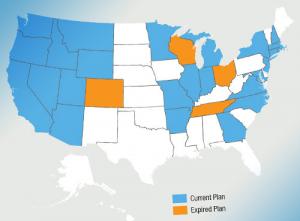Venerable PBR Tool Goes National
Mark Newton Lowry is the President of Pacific Economics Group Research LLC. An internationally-recognized expert on performance-based regulation, Dr. Lowry holds a PhD in applied economics from the University of Wisconsin and previously taught energy economics at the Pennsylvania State University.
Matt Makos is a Consultant II at PEG. Both authors live in Madison, Wisconsin.
Revenue decoupling is nearing its fortieth anniversary as a tool for regulating U.S. electric utilities. Already used in many states, it is poised to play a larger role in addressing power industry challenges. This article considers the rationale for decoupling, how it works and key precedents, advantages of decoupling, and potential improvements.
Relaxing Link Between Earnings and System Use

Decoupling is a popular means of relaxing the link between the earnings of energy utilities and the use of their systems, such as their sales or delivery volumes. The rationale for this begins with the fact that, under legacy rate designs, usage charges such as volumetric and demand charges compensate energy utilities for a sizable share of their fixed costs — costs that don't vary in the short term with system use — as well as variable costs such as fuel and power expenses. Between rate cases, growth in system use can then create a profitable margin for the utility, while a decline can diminish this margin.
This arrangement made some sense in the decades before 1970, when the sales of energy utilities tended to grow faster than the costs of their base rate inputs, such as capital and labor, and damage from the use of fossil generation fuels wasn't a widespread concern. Sales growth boosted capacity use and the realization of scale economies.

